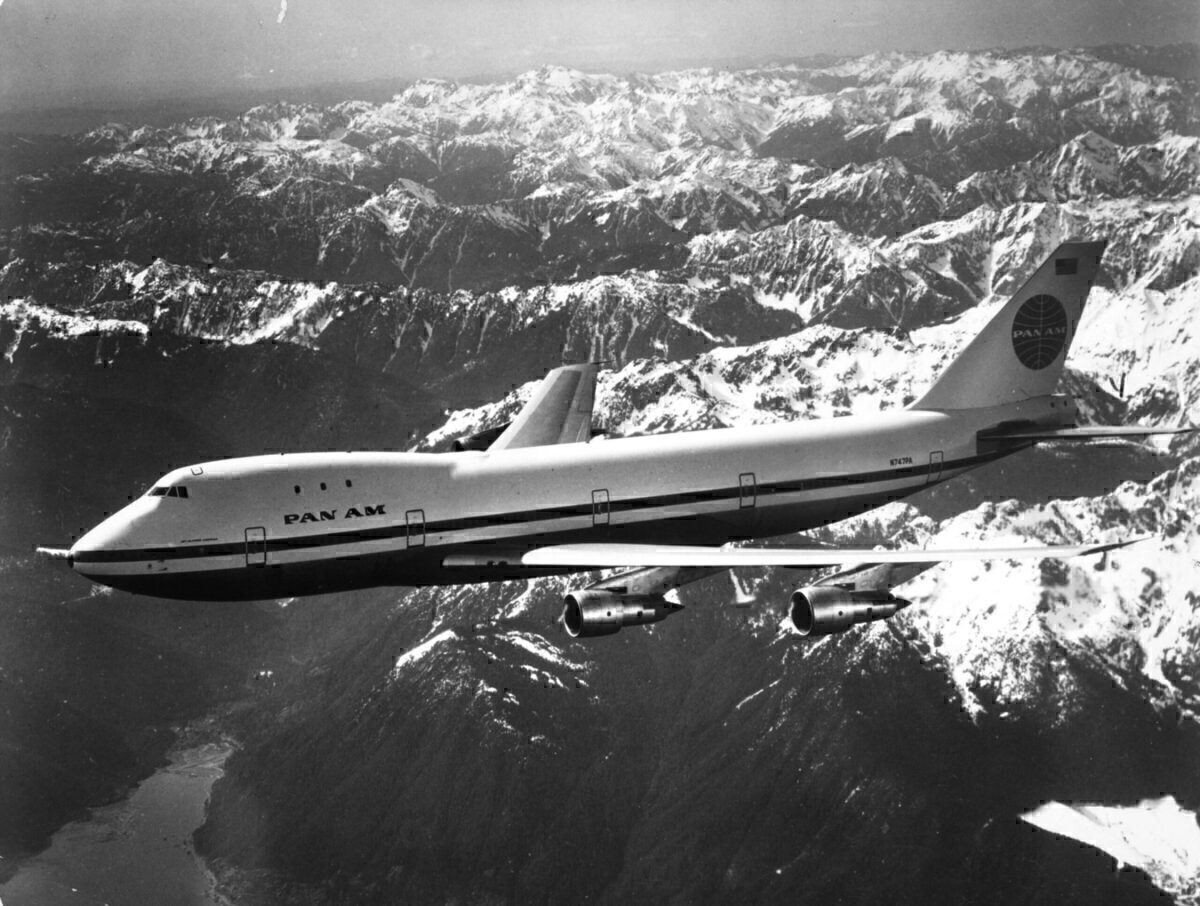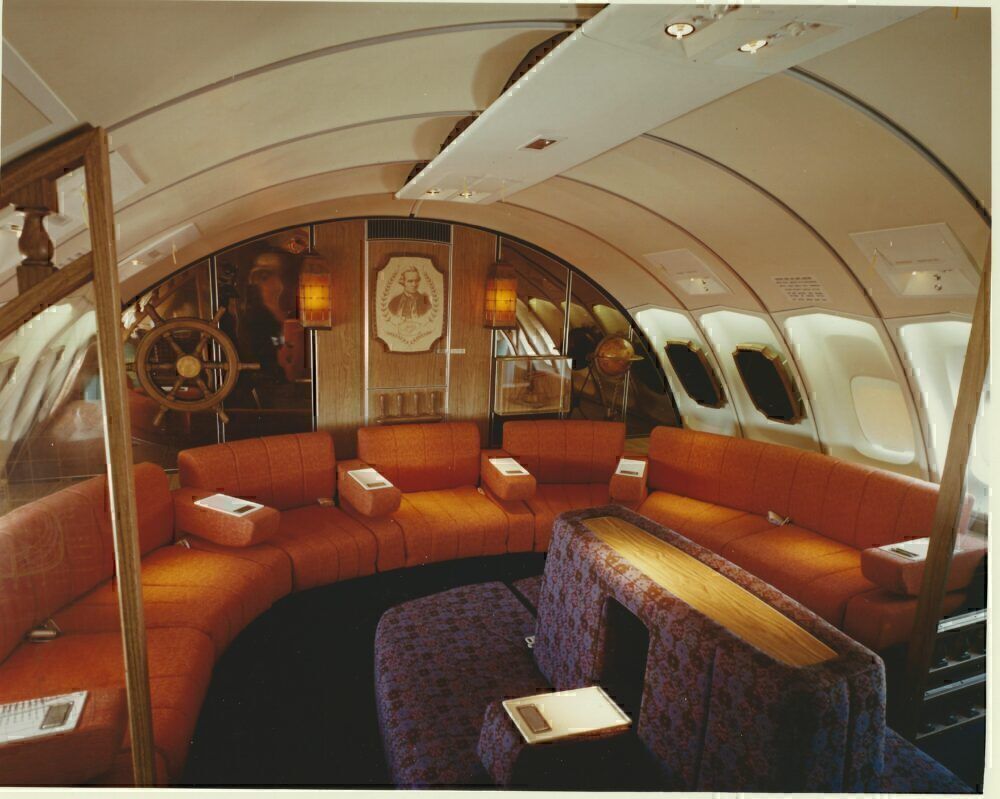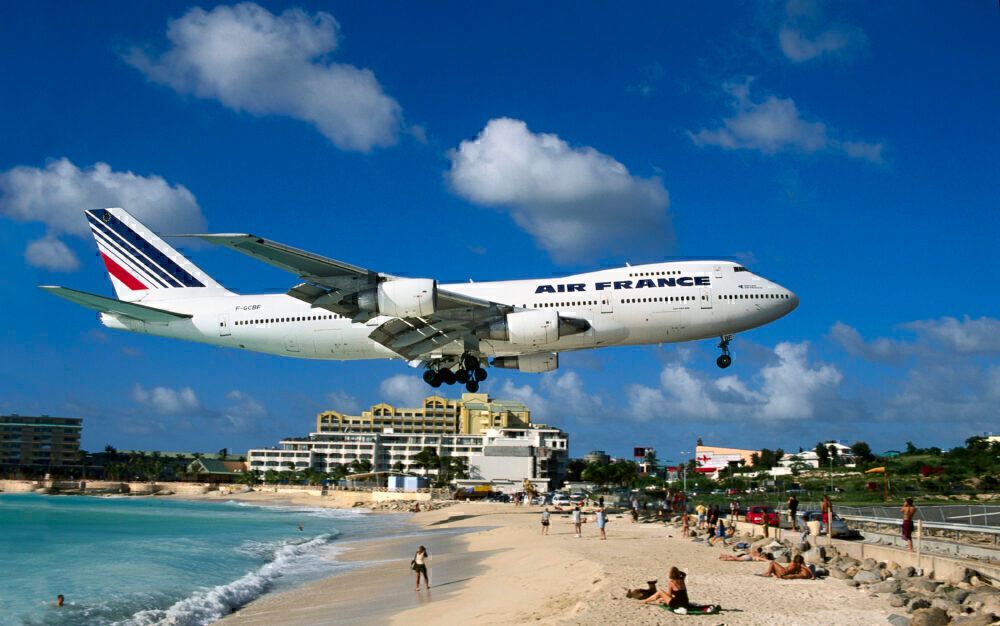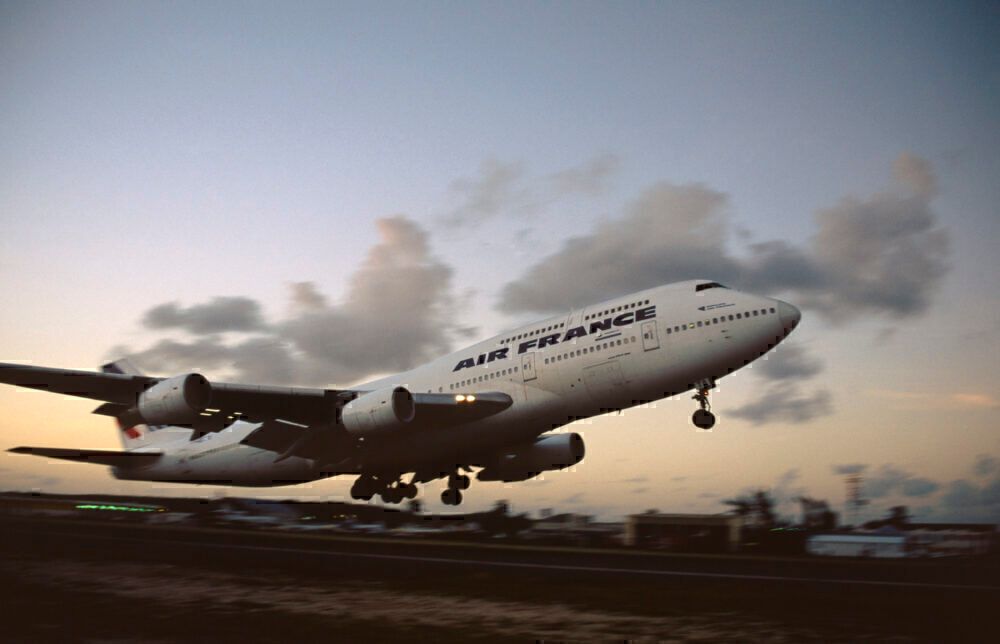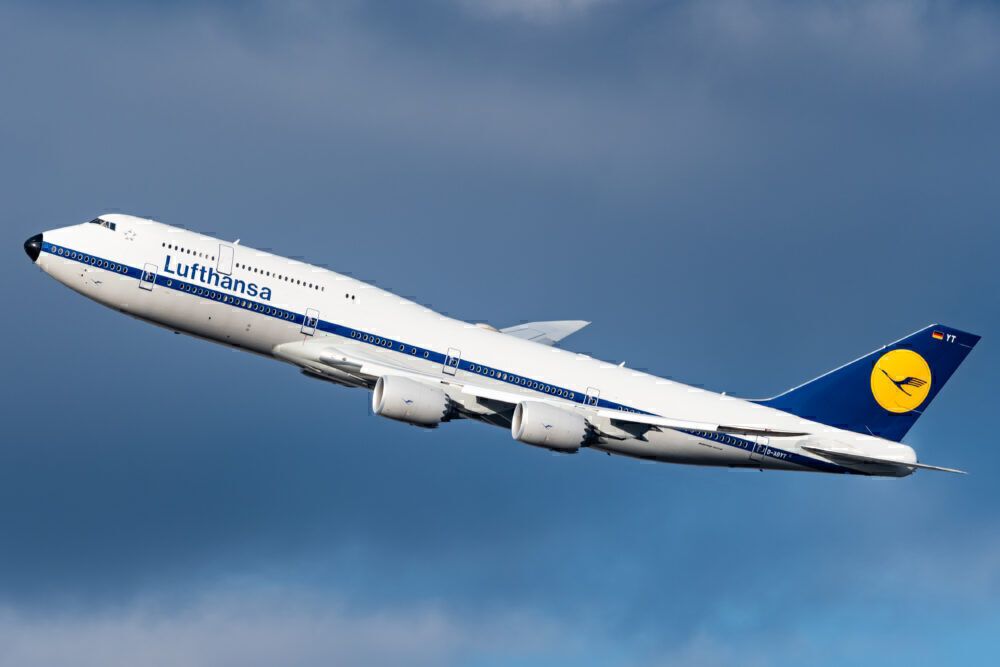The Boeing 747 will go down in history as one of the most iconic airliners of its time, and perhaps even of all time. After entering service in 1970, it was the face of long-haul travel for decades before airlines began to favor more efficient twin-engine designs. Arguably its most striking feature on a visual level is its upper deck. But, as Boeing has produced more and more 747 variants, how has this exclusive upstairs cabin changed over time?
The original upper deck
The Boeing 747's iconic upper deck became part of its design when engineers considered how they could streamline the aircraft's cargo operations. Moving the cockpit upstairs allowed a cargo door to be incorporated into the aircraft's nose, meaning that operators could load freight into the plane more efficiently. This created the 747's humped fuselage, but how would operators use the extra space on passenger-carrying versions?
The first variant of the 'Queen of the Skies' to enter commercial service was the 747-100. This aircraft made its maiden revenue-earning voyage with Pan Am from New York JFK to London Heathrow in January 1971. At this time, the upper deck was used as an exclusive lounge area, with just three windows on either side. Boeing had also proposed a below-deck 'Tiger Lounge' for the aircraft, although this never came to fruition.
Stay informed: Sign up for our daily and weekly aviation news digests.
The use of the upper deck as a lounge area helped cement the 747's position as an inspiring way to fly long-haul. Airlines often celebrated their countries' heritage with these areas, such as Qantas's nautical-themed Captain Cook Lounge.
Use as a passenger cabin
Although the use of the upper deck as a lounge offered passengers an exclusive and luxurious environment in which to socialize, airlines eventually found another use for it. Indeed, they were able to increase the aircraft's capacity by instead installing premium seating there. As such, later 747-100s instead sported 10 windows on either side, rather than three as before.
Some operators also chose to retrofit their older aircraft to align with this trend. When the longer-range 747-200 entered the fray, the majority had the new style of upper deck, with just a handful of earlier examples retaining the original three on each side. The short-fuselage 747SP (Special Performance) also featured 10 windows on each side upstairs.
Stretching the upper deck
The 747's iconic upper deck has also been stretched multiple times during its five decades of operational history. The 747-100B was the first example of the type to have this aspect extended, and the 747-200B's upper deck was also subjected to an internal stretch.
However, this capacity-boosting feature did not become standard until the introduction of the 747-300, which entered service in 1983. This saw the upper deck extended by more than seven meters, and it was the first example to have emergency exits upstairs. It was inspired by the aforementioned 747SP's upper deck, which began over the wing box, rather than ahead of it as had been the case on older models.
This offered a meaningful increase in capacity, supplemented by the space saved by swapping the original spiral staircase for a straight design. The -300's stretched upper deck was also standard on the popular 747-400, which quickly superseded its predecessor thanks to features such as its glass cockpit and fuel-saving winglets.
Interestingly, the 747-300 style upper deck also found its way onto certain older aircraft, such as two retrofitted UTA 747-200M 'Combi' planes. Furthermore, Boeing also produced two brand-new 747-100BSR SUD models to serve Japan Airlines' busy domestic routes.
The 747-8
The upper deck's final stretch came when Boeing introduced the 747-8 design. Much like the preceding 747-400, only the passenger variants featured this upstairs extension. Curiously, we can see in the photograph above that its two rearmost windows are separate from the rest of the top floor. Their purpose is reportedly to provide natural light in the stairwell.
While it is a shame that the 747 is becoming an increasingly rare aircraft, its five decades of service have produced countless memories for travelers worldwide. Many surely relate to special journeys on the plane's exclusive upper deck, which, as we have seen, has undergone several interesting transformations in both size and function over the years.
Which version of the 747's upper deck is your favorite? Have you ever flown upstairs on the Queen of the Skies? Let us know your thoughts and experiences in the comments!

